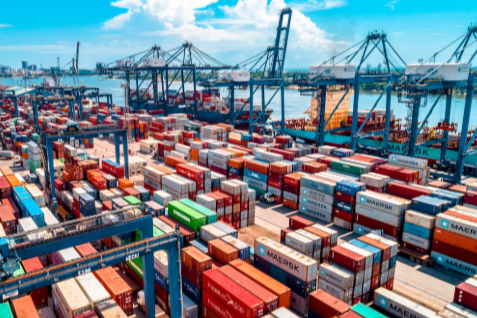Mastering Shipping Tracking in Modern Business

Quick Overview of What You’ll Learn:
● The role of accurate shipment visibility in business operations
● How to integrate shipping tracking Magento into your eCommerce workflow
● The core features of robust shipping tracking software
● Common challenges in shipment monitoring and how to address them
● The future of shipment tracking technology
Understanding the Strategic Value of Shipping Tracking
In the current business landscape, customers expect transparency at every stage of the fulfilment process. Shipping tracking is no longer just a logistical add-on—it has become a core part of customer experience. Real-time tracking systems enable businesses to provide accurate delivery estimates, resolve issues faster, and build trust.
From a business perspective, the data collected through tracking can be analysed to improve supply chain efficiency, reduce costs, and forecast demand patterns more accurately. This dual benefit—enhanced customer satisfaction and operational insight—makes shipping tracking indispensable.
Why Integration with Platforms Like Magento Matters
For eCommerce merchants, order fulfilment is a high-stakes process where delays or miscommunication can directly impact customer loyalty. By implementing a system such as shipping tracking Magento, businesses can ensure a smooth integration between order management, inventory updates, and delivery notifications.
This integration not only streamlines operations but also allows for:
● Automatic synchronisation of order and shipment data
● Unified dashboards to monitor delivery progress
● Proactive notifications to customers regarding status changes
Such features eliminate manual errors and improve response times when shipping issues occur.
Core Capabilities of Modern Shipping Tracking Software
The market for shipping tracking software is diverse, offering tools with varying levels of complexity. For businesses aiming for long-term reliability, selecting software with the following capabilities is critical.
Before exploring the list, it’s important to note that the right tracking system should adapt to your existing workflow rather than force unnecessary process changes.
Key capabilities include:
● Multi-carrier integration: Ability to track shipments across various courier services in one interface.
● Real-time updates: Continuous data refresh to reflect accurate delivery stages.
● Automated alerts: Notifications for delays, failed deliveries, or route changes.
● Analytics and reporting: Insight into delivery performance and carrier reliability.
● Custom branding: Branded tracking pages to reinforce your company identity.
Challenges Businesses Face in Shipment Tracking
Despite technological advancements, several recurring issues continue to challenge businesses in shipment tracking. These can affect operational performance and, in turn, customer trust.
One of the most common is inconsistent data from carriers. Tracking systems rely heavily on the accuracy and frequency of updates from delivery providers. If a carrier provides infrequent or delayed updates, it can undermine the value of the tracking system.
Another challenge is system integration. Businesses often operate with a combination of legacy software and modern applications. Ensuring smooth data exchange across platforms can require significant technical effort.
How Data from Shipping Tracking Improves Decision-Making
Beyond customer communication, shipment tracking data offers a wealth of operational intelligence. Businesses can use this data to identify bottlenecks, optimise delivery routes, and evaluate carrier performance.
For example, by analysing delivery timelines across regions, a retailer can identify areas where switching carriers could result in faster delivery. Similarly, detecting recurring delays from specific distribution hubs can guide logistical restructuring.
Future Trends in Shipping Tracking Technology
As technology continues to advance, shipping tracking is expected to become more predictive rather than purely reactive. This means businesses will not only see where a shipment is but also anticipate delays before they occur.
Artificial intelligence and machine learning are being integrated to analyse historical shipping data, weather conditions, and traffic patterns to predict potential disruptions. Additionally, blockchain technology is being explored to create immutable records of shipment movements, which could enhance trust in high-value or sensitive deliveries.
Read Also: Smart Home Integration with Modern Builders & Construction Techniques
Best Practices for Implementing a Shipping Tracking System
For businesses considering the adoption of a new tracking solution, there are several best practices to follow. These ensure that the technology investment leads to measurable operational benefits.
Before adopting, companies should conduct a full audit of their fulfilment workflow. This helps identify the exact tracking requirements and integration points needed. Another essential step is to involve both technical and customer service teams during the selection process to ensure the system meets functional and usability expectations.
Implementation tips:
● Choose solutions compatible with your current eCommerce or ERP systems
● Test with a limited set of orders before full deployment
● Train staff on interpreting and using tracking data effectively
● Establish escalation protocols for delayed or lost shipments
Conclusion
Incorporating advanced shipping tracking systems into business operations is no longer optional—it’s a competitive necessity. From enhancing customer satisfaction to enabling data-driven logistics, these tools offer substantial value when implemented thoughtfully. By selecting solutions that align with operational needs and integrating them effectively, businesses can achieve smoother fulfilment processes, stronger client trust, and actionable insights for continuous improvement.





